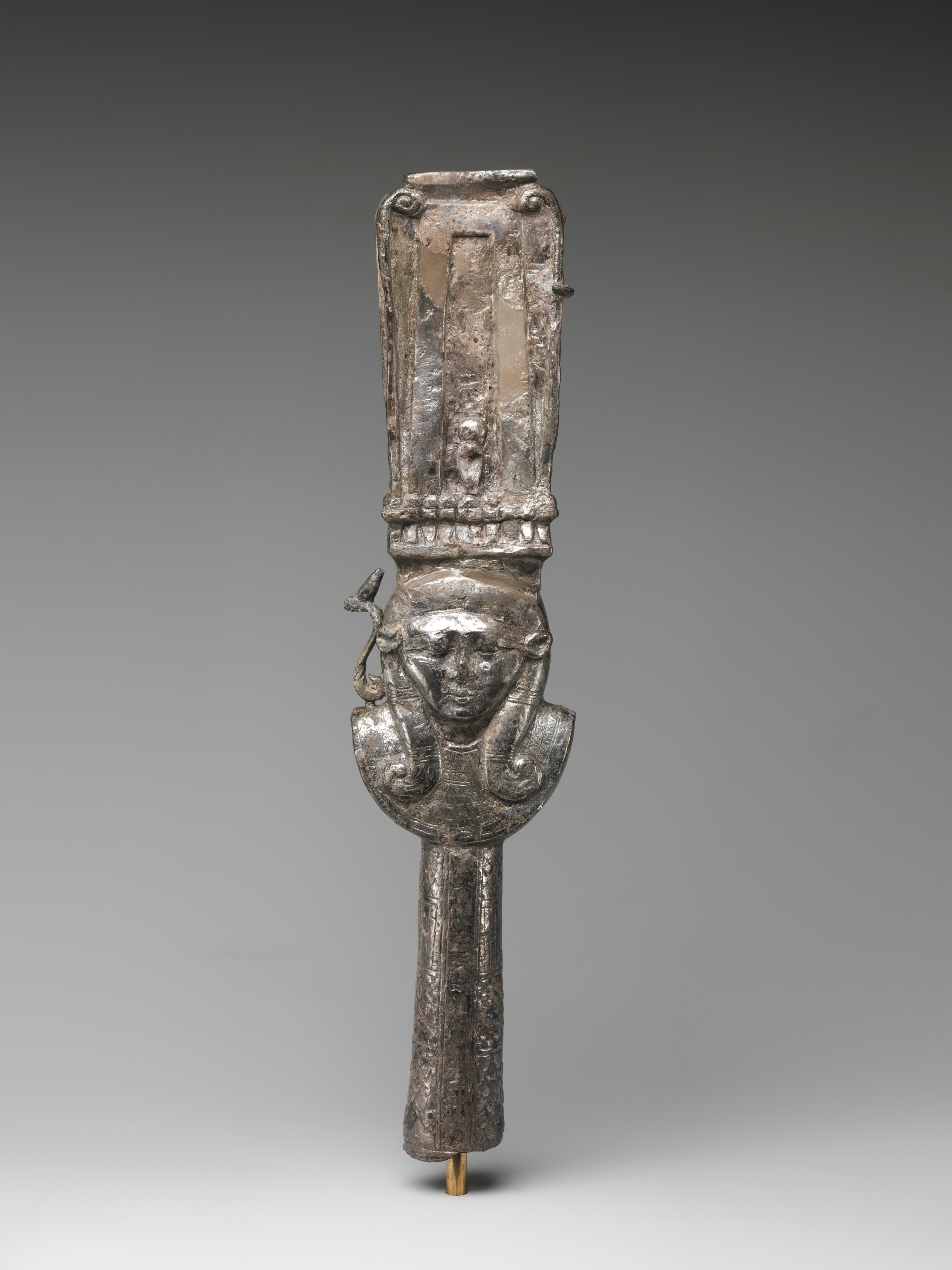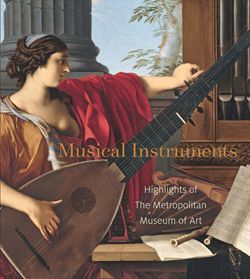Sistrum with a dedication referring to a king
Ptolemaic Period
The sistrum was a a sort of rattle, its rustling sound associated in particular with great female goddesses, for instance Tefnut, Hathor, Isis, or Bastet.
Like all Egyptian sistra, this one has the emblem of Hathor/Bat, the frontal head of a female with cow ears, at the juncture of the upper part and the handle. Above the goddess's head, a naos or shrine forms the sound-box. The naos in this instance is not openwork, so that disks could not be strung between the sides of the naos as they usually were. Three holes are provided on each side for the crossbars, however, so possibly the movement of the crossbars within the soundbox created a desirable sound.
Beneath the Hathor emblem are columns of inscription on either side of the handle. Although very difficult to deipher owning to pits and cracks, the insciption includes reference to shaking the sistrum for a goddess - possibly Hathor is named. The inscriptions include cartouches, but these are empty, a fairly frequent phenomenon at this time. The handle is elaborately decorated with bands of ornament - the feather patterns at top and bottom, another imbricated pattern and a checkerboard pattern in between.
Due to rights restrictions, this image cannot be enlarged, viewed at full screen, or downloaded.
This artwork is meant to be viewed from right to left. Scroll left to view more.






